Text: Anna-Sophie Jürgens, Suchismito Khatua and Nina Tolksdorf | Special Contributions
Abstract: The connections between circus and the avant-gardes in both research and aesthetic practice have already been explored in w/k. However, as this article shows, the circus-avant-garde theme has the potential to inspire and enrich three interdisciplinary areas of research with new insights: Embodied Research, pantomime as cultural protest and Postcolonial Studies. Discussing this potential, this article draws on, and adds to, some of the intersections between popular art in the form of circus and the avant-gardes, hinted at in a recently published edited collection. The aim is to stimulate lively future academic and artistic explorations into the interstices, and at the intersections, between circus and avant-garde research and art.
A Point of Departure: Circus and the Avant-Gardes: History, Imaginary, Innovation
Since the early twentieth century, artists and scholars alike have been fascinated by the historical avant-gardes, their conceptual ideas, their practice and their artistic products, as reflected by scholars (from fields as varied as circus, theatre and performance studies, art, media, film and animation studies and cultural history) and circus practitioners in the new volume Circus and the Avant-Gardes: History, Imaginary, Innovation (Routledge, 2022). This book examines how circus and avant-garde connections contribute to a better understanding of early twentieth-century artistic movements, and their enduring legacy; the history of popular entertainment; and the cultural relevance of circus arts. This edited collection elucidates how the realm of the circus as a model – or, rather, a blueprint for modernist experiment, innovation and (re)negotiation of bodies – has become fully integrated into our perception of avant-gardes today. In these contexts, the many scholarly approaches and multidisciplinary academic perspectives on circus as a popular art form and as an avant-garde phenomenon are of interest to w/k.
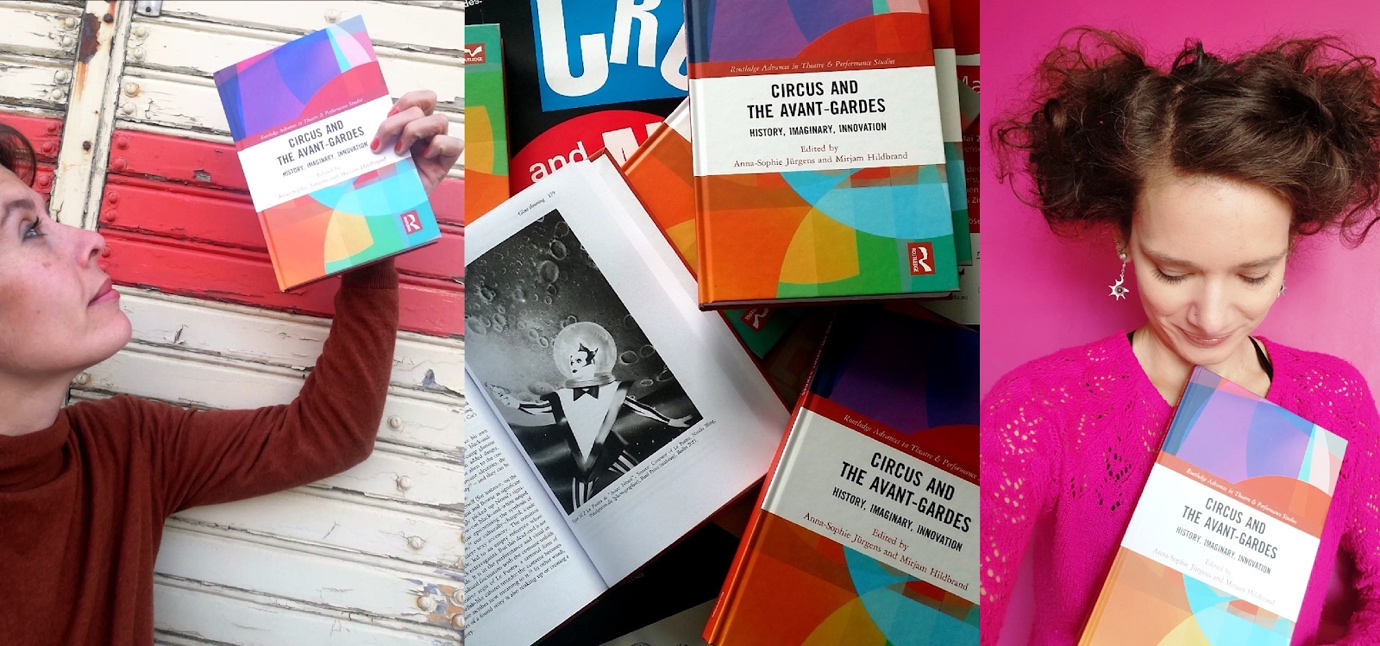
The term “avant-gardes” is associated with playfulness, genre-twisting innovation, (formal) experimentation, blurring boundaries and iconoclastic attitudes towards convention. Throughout the Circus and the Avant-Gardes book, “avant-gardes” also appears in the form of abstraction and constant change, inner mobility and even as a state of mind. However, as the scholars in the edited collection show, the term has become a projection screen, a looking glass, a prism for an idea in and of itself. This idea shapes our understanding and notion of art today – namely that art must be critical and create something new. Contemporary circus arts often (and most often unconsciously) draw on, and participate in, this understanding of art; in this context “avant-garde” is merely an attitude and gesture. Circus and the Avant-Gardes thus explores, from a variety of disciplinary perspectives, some of the imaginaries that avant-garde artists have developed about the circus, some of the (cultural) imaginaries that avant-garde artists associate with the circus, and how they live on in artistic expression and research. These fantasies include that the circus, along with the many art forms it embraces, is a narrative-free space; that circus history written by circuses is an incontestable historical record; and that the circus, and related forms of popular entertainment (such as vaudeville and variety), are anti-hierarchical – if not anarchist – realms that exist outside of “ordinary” society. In what follows, we discuss the potential of the circus-avant-garde theme to inspire and lend new insights to three (perhaps surprising) areas of research that take some of these contradictions, pitfalls and promises to different stages: Embodied Research, pantomime as cultural protest and Postcolonial Studies. Looking at the circus and avant-garde theme through the research prisms of costumed bodies, protest and non-Western perspectives can not only add new perspectives to the discussion of the circus-avant-garde space in w/k (see Circus Arts and the Avant-Gardes and Circus & the Avant-Gardes: Between Science and Art) but also contribute to a growing interest in New Modernist Studies – how popular theatre, clowning, arts and entertainment erode the conventional association of modernism with the difficult, intellectually complex, serious and European. At the same time, in light of contemporary performance and research, this article argues that the circus avant-garde space expands the association of circus with the nonsensically cheerful, intellectually lightweight and unserious.
Art and Physicus Fiction: Le Pustra’s Neon Noir Sci-Fi Pierrot – Costume, Belonging and Embodied Research
Embodied Research is an emerging area of research that focuses on the body and the possibilities of embodiment, which includes, for example, the experience and material fact of having and showing a body. The body is a core element of both circus and avant-garde art: circus is a body-based art form per se and early twentieth-century artists were fascinated by bodily expressions and body masks. In the Western research tradition and mind-body hierarchy, little attention has been paid to the body and its expressive power, which is critically reflected by contemporary artists and scholars alike (see the Journal of Embodied Research). The idea that costume – as an extension of an artist’s or performer’s body – is a form of knowledge that structures practice (Spatz 2015) could gain more momentum; contemporary art that draws on circus and avant-garde aesthetics has much to offer in this regard, such as the art of international performer and visual artist Madame Le Pustra (see Chapter 10 of the Circus and the Avant-Gardes book for more detail).
Madame Le Pustra is a queer kunstfigur and actor best known for his provocative Weimar Republic Cabaret inspired Le Pustra’s Kabarett der Namenlosen and playing mysterious nightclub owner, “Edwina Morell” in the award-winning TV series Babylon Berlin (Season 3 and 4). The artist’s dazzling and inspirational unique style has been featured in numerous theatrical events, photo art books, international fashion publications, art exhibitions, music videos, short films and paintings.
Called an avant-garde artist, Le Pustra draws inspiration for his art from both the historical avant-gardes and circus/variety aesthetics. Pierrot references and costumes play an important role.
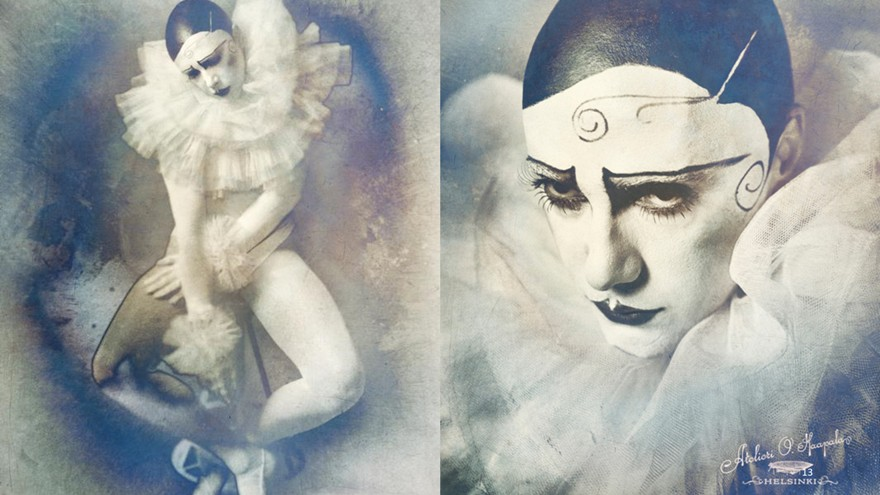

Traditionally, Pierrot costumes reshape the body. They display and identify an emblematic cultural archetype and act as a culturally condensed coding of circus style, extra-ordinariness and, indeed, alien-ess; they are also a sign for creative performance practices. The Pierrot character is intrinsically linked to outer space: it has a deep connection to the moon (see, for example, the French folk song Au clair de la lune, interpreted by Debussy, Satie and others) and, more recently, to extra-terrestrials (see Klaus Nomi, who called himself an alien and performed as one, sent to Earth to sing Earth pop). By blending these cultural phenomena with his interest in space and science fiction themes to give them his own unique twist, Le Pustra’s signature Neon Noir Sci-Fi Pierrot character is a model for a subject that is tolerant of alterity – and an ingenious form of belonging.
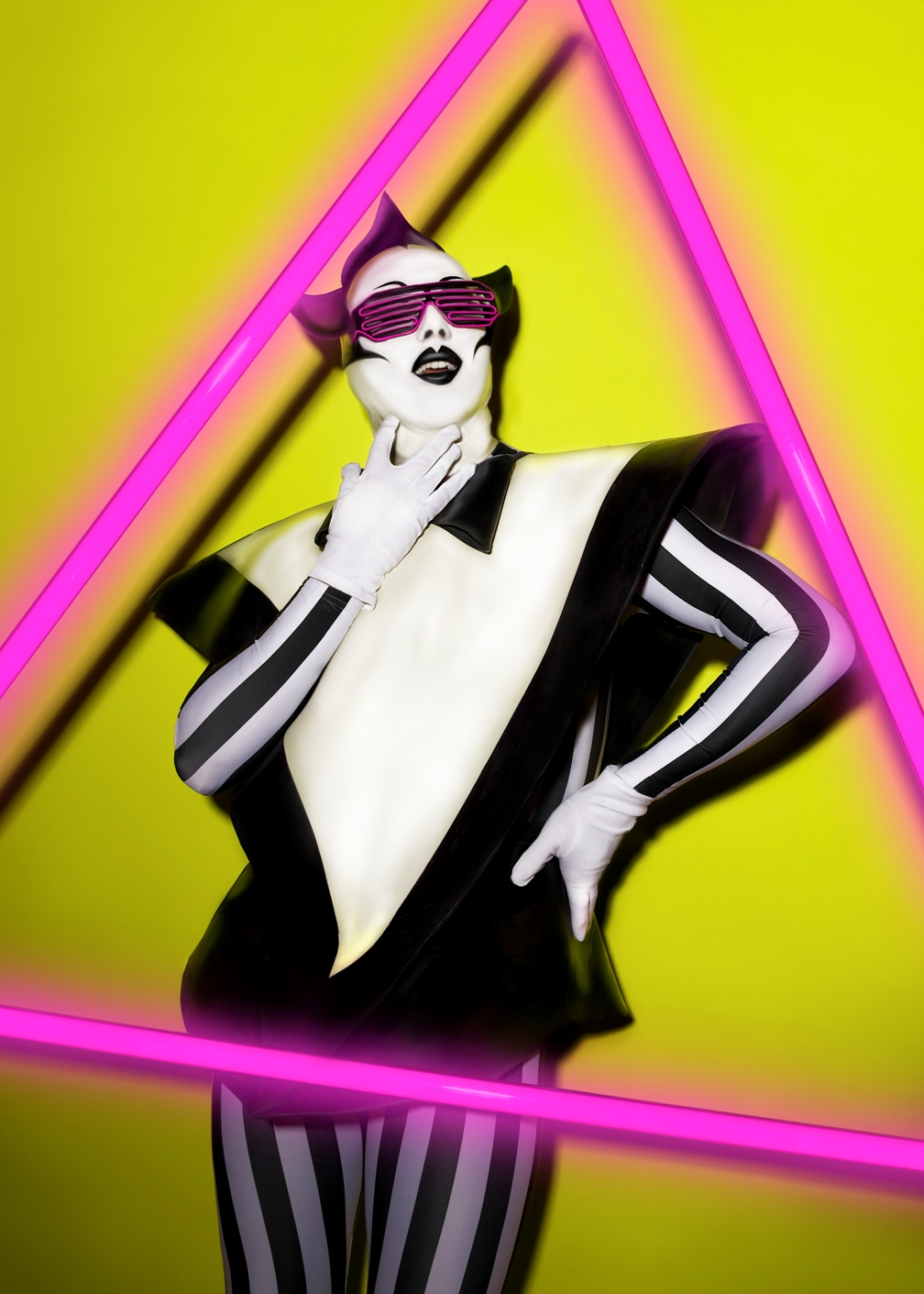
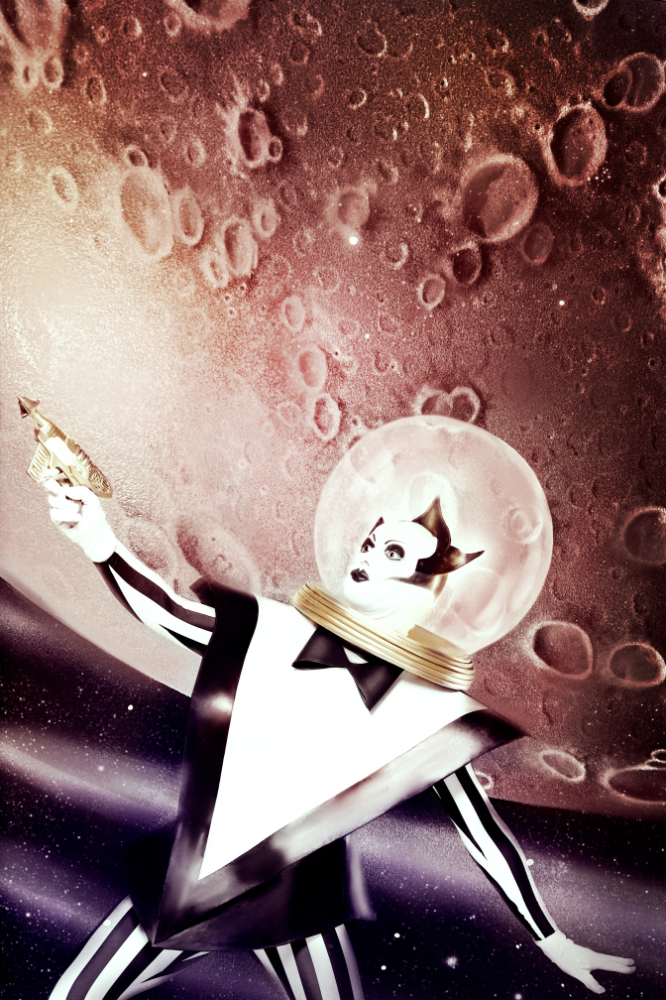
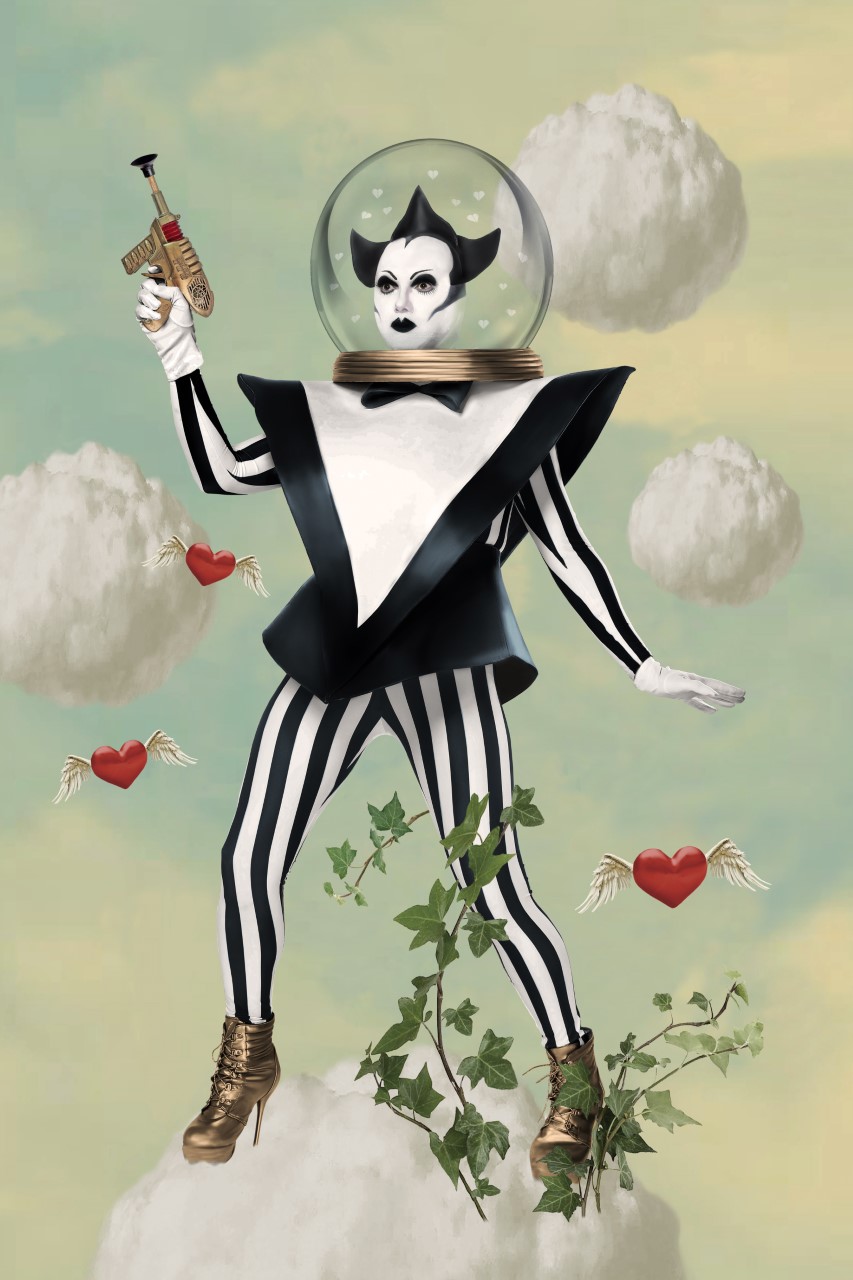
Belonging implies much more than having been born in a particular place. “It suggests that one is an integral piece of the marvellously complicated fabric”, which constitutes community and culture (Cohen 21). Le Pustra’s extravagant take on the circus-avant-garde connection raises the question of how belonging might be defined when that fabric is not a metaphor, but a literal costume. More specifically: How can belonging be embodied through costume? How does an artist “fit in” when “fitting in” does not relate to the right place, but to the right “dress” – which is, in this case, a Pierrot-cum-sci-fi dress?
Creating his Space Pierrot, Le Pustra can be called a “fictor” – originally, a fictor (on which the word “fiction” is based) is not merely an inventor of stories, but a sculptor creating three-dimensional artefacts (Japp 47). We argue that this type of sculptural, body reshaping costume is not merely a visual display of cultural (Pierrot and sci-fi) iconography and (“alien”) identity play but also an interface of belonging – a nexus between personal identity and cultural identities. If “associative feelings with several collective identities” can account for belonging, as argued by Delanty et al. (9), the adoption of Pierrot and space characteristics (and other themes) is a non-verbal means of communicating affirmation, if not “membership”, of cultural aesthetics. Belonging, we can conclude, has aesthetic dimensions and implies much more than having been born in a certain place. References to circus and outer spaces allow costumed bodies to “belong” – to be clothed in belonging.
The idea that identity narratives emerge through the questioning of boundaries between dress and wearer, body and clothing, self and surface, subject and object, interior and exterior, masking and unmasking – perhaps pointing to the impossibility of corporeal integrity (?) – has not been extensively explored in fashion and belonging studies, Circus Studies, Avant-garde studies or Embodied Research. Embodiment through costume – as a process through which avant-garde and circus references are incorporated into contemporary art and pop culture – is a promising field for future research.
Pantomime and Protest
The prominent presence of the body in pantomime is one reason why pantomime is often declared low culture. At the same time, this declaration denies the philosophical and political power of pantomime and thus reinforces its marginalisation. But let us take a step back: Pantomime is traced back to Ancient Greek culture, and even dates to before the rise of tragedy and comedy. It has since been present in performance arts and literature, though its status and practice has undergone many changes: It was performed in the periphery of big balls and dinners; on stage by a single person; and, around 1900, as ostentatious spectacles with hundreds of performers – as well as being an integral part of circus performances. Yet, pantomime is not a popular object of research in the humanities (Hildbrand 29). One reason might be that it occupies a strange status between theatre, cabaret, circus, street art and literature and thus eludes a clear disciplinary classification. Another reason might be that pantomime has swayed between high and low art from its conception (Lada-Richards 125). In antiquity, under Augustus for example, mimes enjoyed high privileges; Tiberius, on the other hand, banned mimes from Italy. Because of its focus on the body, pantomime has repeatedly been accused of being lewd. According to this narrative, from the beginning of its Western history, pantomime was positioned as a danger to science because “lewdness” restricts philosophical and scientific endeavours. Due to its (supposedly) sexualised corporeality – which is perceived as a threat to morality – pantomime is repeatedly regulated by states, including complete censorship.
When pantomime is declared to be low art – which is only for the amusement of the many (and thereby perpetuates elitism in art) or as possible entertainment deprived of higher or deeper meaning – it is banalised and marginalised. In this wake, Rancière writes: “Pantomime is an anti-theatre, or a theatre cleansed of all the academicism of tragedy as it is of the bourgeois vulgarity of melodrama or the comedy of manners” (80). And although Rancière admires pantomime, framing pantomime this way still deprives it of political and social influence.
However, pantomime is an intervention on two fronts. First, it is connected to the original meaning of the word – “to occur between events” – since it gained popularity in antiquity as an intermission filler between drama acts. Second, pantomime is part of the protest-derived meaning of intervention. Pantomime flourished as a performance art, for example, because it resisted the prohibition of the dramatic arts, especially in eighteenth-century France and England. The then-established hierarchy between drama and opera on the one hand and other theatrical forms on the other was reinforced by the censorships that gave state theatres exclusive rights to speak (Hildebrand/Lada-Richards). In the beginning of the twentieth century, pantomime was also a part of the expressive avant-garde dance that rebelled against repressive body regimes of Ballet and society in general (Hardt).
Since the Western humanities are based, and built, on specific argumentative discourse and logocentric structures, the silent art of pantomime – that primarily addresses visual senses and thus brings it close to the fine arts – does not fit within humanities debates – whereas drama, for example, does. Because pantomime is a corporeal art without foregoing narrative, communication and conversation, it seems to be the adversary of the humanities. Seen from this perspective, pantomime becomes an expression of disobedience and its corporeality troubles the regulation of scientific and state dynamics. In 2014, for example, the face-sitting protest in Westminster (GB) used pantomime elements to performatively indict the state’s regulation of female pleasure (Willson). Since, paradoxically, pantomimes cannot be silenced, declaring it a low art is a form of repression and trivialisation of its protest. Thus, the impact of pantomime on politics, literary history, and the Avant-garde alike, is yet to be analysed.
Logging the Unlogged, Laterally
How does the politics of the high and low proliferate outside Western humanities? In his pioneering article, Clement Greenberg distinguishes not only between the avant-garde and kitsch, but also between kitsch and the plethora of folk forms organic to every culture. “As a mass product of Western industrialism”, writes Greenberg, machine-made kitsch has “gone on a triumphal tour of the world, crowding out and defacing native cultures”, and positing itself in their stead as a homogenising “universal culture” (12). Particularly true of colonised nations, the hegemony of kitsch relegates the autochthonous popular arts into a minor position, irrecoverable except through avant-gardist modes. The emergence of the avant-garde in several South Asian nations, for instance, is explicably tied to a resurgence of many of these forms. The work of Abanindranath Tagore, Sunayani Devi, Jamini Roy, Nandalal Bose, Zainul Abedin and Quamrul Hassan exemplify this uneven integration of a minor, avant-gardist stance with age-old, indigenous folk art.
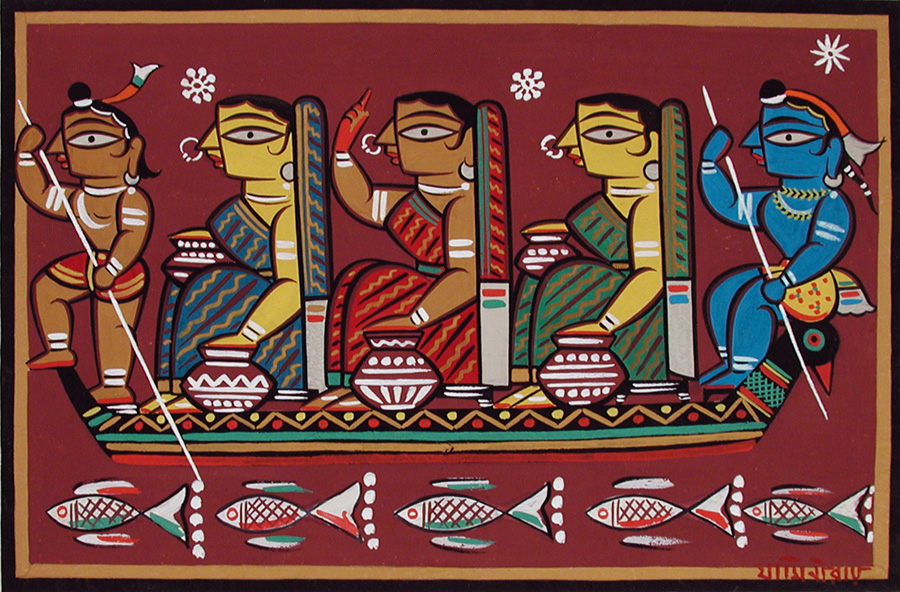
In a more lateralised field of new modernist and avant-garde studies – populated by such concepts as “geomodernism”, “planetary modernism”, “decentred modernism”, “modernism from the margins” and “centripetal modernism” – such novel imbrications of the popular and the vanguard outside of Europe and America deserve renewed attention. Navigating the diverse terrains of literature, visual arts, music and performance, new research could respond to questions of method, reception, viability, difference and futurity: How do notions of the popular and the avant-garde vary across heterogenous spatialities? How do colonisation and coloniality crystalise avant-gardist or popular art practice? How do non-Euramerican avant-gardes challenge stable historicist narratives of popular culture, radical art and their intermingling, around the world? Finally, how can we frame Euramerican and non-Euramerican avant-gardes in transactional relations not founded on rigid binaries – centre and margins, or influence and derivation?
In so far as a study of the circus arts – as an example of the popular being imbricated by, and also imbricating, the radical – postulates a shift in conventional modes of scholarship on the European historical avant-garde, new research must point to latitudes where similar figurations can be identified and explored. It must provoke questions about the potentiality of circus and the wider domain of the popular performance arts – ranging, for instance, from the bhand pather in Kashmir to the figure of the detained clown Mohammed Abu Sakha in Palestine – in projecting themselves into a truly disruptive, precipitous and dissentient avant-garde position, both in the realm of the contemporary political (irreducible to modern-day Euramerica) and also in those yet to come.
The terms “avant-garde” and “circus” are thus themselves elusive and polarising, and the scholarly and artistic explorations oscillating between high and low, elitist and pop, entertainment and sophistication offer striking contrasts and juxtapositions – not to mention, future directions. Based on the research collected in the aforementioned books, the three further approaches outlined here demonstrate that it is indeed worthwhile to re-evaluate the avant-gardes participation in certain narratives that prefer specific Western viewpoints – be it embodiment, the role of art for politics or the constative framing of movements like modernism. Although the avant-garde is a break with tradition, in its many gestures of negation, it may not necessarily be that different from the traditional.
References
Cohen, A. 1982. A sense of time, a sense of place: the meaning of close social association in Whalsay, Shetland. In: Belonging: Identity and Social Organisation in British Rural Cultures, ed. A. Cohen, 21-49. Memorial University of Newfoundland.
Delanty, G., Wodak, R. and Jones, P. 2008. Migration, discrimination and belonging in Europe. In: Identity, Belonging and Migration, eds. G. Delanty, R. Wodak, R. and P. Jones, 1-20. Liverpool University Press.
Greenberg, C. 1939/1961. Avant-Garde and Kitsch. In: Art and Culture: Critical Essays, 3-21. Beacon Press.
Hardt, Y. 2004. Politische Körper. Ausdruckstanz, Choreographien des Protests und die Arbeiterkulturbewegung in der Weimarer Republik, Lit.
Hildbrand, M. 2022. A Treasure Trove for Avant-Garde Artists? Metroplitan circus performances around 1900. In: Circus and the Avant-Gardes. History, Imaginary, Innovation, eds. A.-S. Jürgens and M. Hildbrand, 19-36. Routledge.
Japp, U. 1995. Die literarische Fiktion. In: Die Dichter lügen, nicht: Über Erkenntnis, Literatur und Leser, eds. C. Hilmes and D. Mathy, 47-58. Königshausen & Neumann.
Rancière, J. 2011. Aisthesis: Scenes from the aesthetic regime of art, Verso.
Spatz, B. 2015. What a Body Can Do, Routledge.
Willson, J. 2018. Porn, Pantomime and Protest: The Politics of Bawdiness as Feminine Style. In: Porn Studies 5/4, 426-439.
Acknowledgements
The research by Nina Tolksdorf and Suchismito Khatua is funded by the Deutsche Forschungsgemeinschaft (DFG, German Research Foundation) under Germany’s Excellence Strategy in the context of the Cluster of Excellence Temporal Communities: Doing Literature in a Global Perspective – EXC 2020 – Project ID 390608380.
Details of the cover image: Le Pustra: Vintage Pierrot (2014). Photo: Scott Chalmers.
How to cite this article
Anna-Sophie Jürgens, Suchismito Khatua and Nina Tolksdorf (2022): Exploring Popular Art and the Avant-Gardes: New Perspectives. w/k–Between Science & Art Journal. https://doi.org/10.55597/e7936

… [Trackback]
[…] Information to that Topic: between-science-and-art.com/special/exploring-popular-art-and-the-avant-gardes-new-perspectives […]